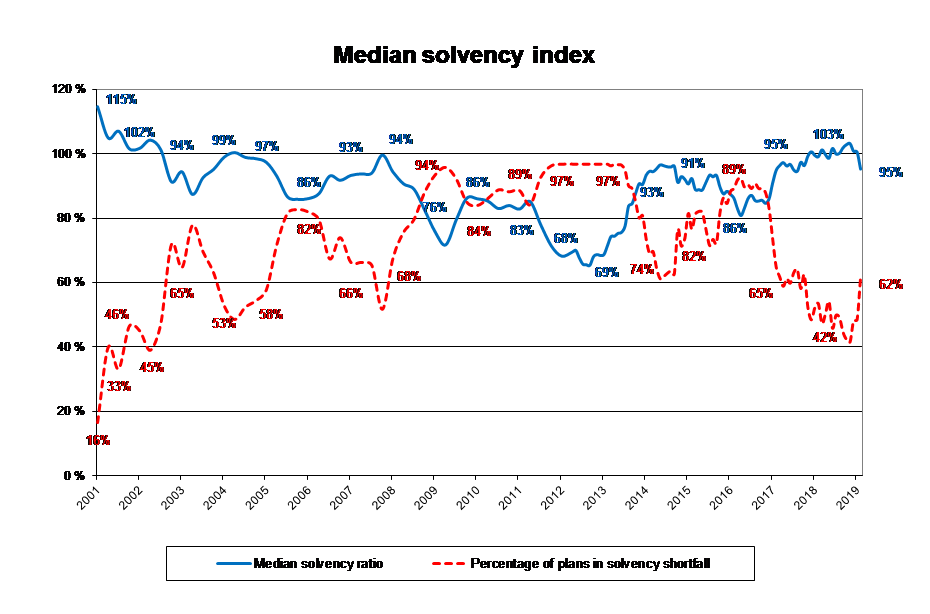Fourth quarter posted declines following record highs

Canada’s defined benefit pension plans saw record highs in 2018 but things changed in the fourth quarter.
Two reports this week highlight the decline for DB funds amid falling bond yields and equity market volatility.
“The sour mood that gripped financial markets in late 2018 finally caught up with Canadian pension plans,” said Calum Mackenzie, Partner, Head of Investment, Canada, for Aon. “In the fourth quarter of 2018, Canadian bond yields fell while equity returns were negative as well, a double whammy for pension plan financial health.”
Aon’s Median Solvency Ratio declined sharply in fourth quarter of 2018, to 95.3% as of Jan. 1, 2019. That is down 3.9 percentage points on the year, and a decline of nearly eight percentage points from the all-time quarterly high reached in Q3 2018.
Meanwhile, the Mercer Pension Health Index, which represents the solvency ratio of a hypothetical plan, stood at 102 per cent on December 31st down from 112 per cent on September 28th and 106 per cent the beginning of the year. Less than 30% of Canadian pension plans ended the year fully funded, down sharply from the 60% that achieved that level at the end of September.
“Canadian pension plans took a significant hit in the fourth quarter, but thankfully they were starting from a very strong position” said Manuel Monteiro, Leader of Mercer Canada’s Financial Strategy Group.
Mercer says that even though the decline in funded positions was sharp and sudden, the surplus position of most funds means they were better placed to absorb the hit.
Looking ahead in 2019
Despite the downturn for DB pension funds, both Aon and Mercer Canada are optimistic for the year ahead.
We don’t expect the volatility to end in 2019, but pension plans’ financial positions remain strong after the longest bull run in history,” said Mackenzie. “Now is not the time to be passive with pension plan financial management as trade concerns, economic growth and geo-political tensions could continue to take their toll on the markets in 2019. “Investors that have not yet diversified should look for opportunities by selling into market strength and avoid making rash moves.”
Mercer says that despite the threats of continued volatility, the new funding rules will encourage some plan sponsors to maintain significant investment risk, particularly if their plans are not fully funded and they have a time horizon of a decade or more.
However, it says that sponsors of closed and frozen defined benefit plans that remain well funded should strongly consider taking risk off the table, either by changing the asset mix or through risk transfers.
William da Silva, Senior Partner and Retirement Practice Director, Aon in Canada agrees.
“We have been saying for some time that plan sponsors should take advantage of historically strong solvency positions and consider diversification and de-risking strategies, including the full settlement of liabilities. The good news is they still have time to act – but as the volatility of the last quarter proves, nothing lasts forever, and time might be running out.”

Aon’s Median Solvency Ratio at end of Q4 2018 stood at 95.3%
Image: Aon Hewitt Canada



